
Monsieur Leguignon, Signalman is a 1952 French comedy film directed by Maurice Labro and starring Yves Deniaud, Jane Marken and Bernard Lajarrige. It was shot at the Boulogne Studios in Paris. The film's sets were designed by the art director Paul-Louis Boutié. It was based on a radio programme and was followed by a sequel Leguignon the Healer in 1954.

Jericho is a 1946 French war film directed by Henri Calef based on Operation Jericho. It was shot at the Epinay Studios of Eclair in Paris.

The Lost Village is a 1947 French crime drama film directed by Christian Stengel and starring Gaby Morlay, Alfred Adam and Line Noro. It is based on a novel by Gilbert Dupé. The film's sets were designed by the art director Lucien Aguettand.

Three Telegrams is a 1950 French drama film directed by Henri Decoin and starring Gérard Gervais, Pierrette Simonet and Olivier Hussenot. The film's art direction was by Auguste Capelier. It was made at the Billancourt Studios in Paris.
Jean Gobet was a French stage and film actor.
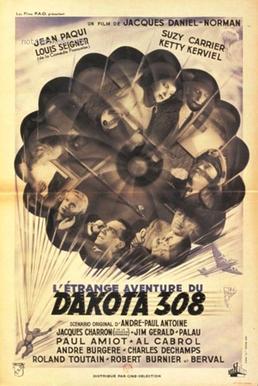
Dakota 308 is a 1951 French crime film directed by Jacques Daniel-Norman and starring Suzy Carrier, Jean Pâqui and Louis Seigner. The film's sets were designed by the art director Lucien Carré.
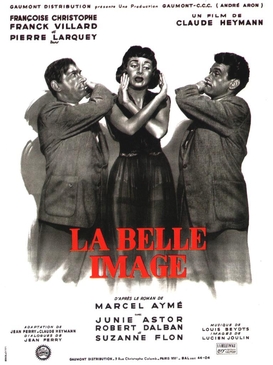
The Beautiful Image is a 1951 French drama film directed by Claude Heymann and starring Frank Villard, Françoise Christophe and Pierre Larquey. The film's sets were designed by the art director Robert Hubert. It was based on the 1941 novel of the same title by Marcel Aymé.
Interpol Against X is a 1960 French crime film directed by Maurice Boutel and starring Howard Vernon, Maria Vincent and Andrex. It is also known by the alternative title of Dossier AST-555.

The Lovers of Marianne is a 1953 French comedy film directed by Jean Stelli and starring Gaby Morlay, André Luguet and Jean Debucourt. It was shot at the Boulogne Studios in Paris. The film's sets were designed by the art director Raymond Gabutti.

The Angel of the Night is a 1944 French drama film directed by André Berthomieu and starring Jean-Louis Barrault, Michèle Alfa and Henri Vidal. The film's sets were designed by the art directors Lucien Aguettand and Raymond Nègre.
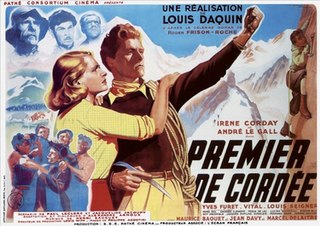
First on the Rope is a 1944 French drama film directed by Louis Daquin and starring Irène Corday, André Le Gall and Lucien Blondeau. It is an adaptation of the 1941 novel of the same title by Roger Frison-Roche. It was a faithful adaptation of the novel, which began shooting in June 1943 during the German Occupation of France. Despite being directed by Daquin, a French Communist, it was considered to demonstrate a Pétainist ideology possibly even containing elements of Nazism.

Moulin Rouge is a 1941 French musical comedy film directed by André Hugon and Yves Mirande and starring Lucien Baroux, René Dary and Annie France. The film's sets were designed by the art directors Lucien Jaquelux and Hugues Laurent.

Four Knaves is a 1947 French comedy film directed by André Berthomieu and starring Jean Desailly, Martine Carol and Denise Grey. It was shot at the Francoeur Studios in Paris. The film's sets were designed by the art director Raymond Nègre.
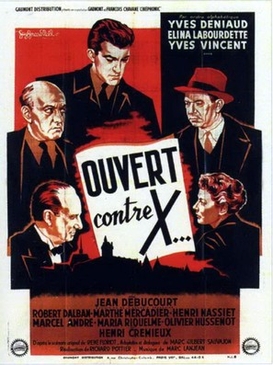
The Case Against X is a 1952 French crime thriller film directed by Richard Pottier and starring Yves Deniaud, Elina Labourdette and Yves Vincent. It was shot at the Saint-Maurice Studios in Paris and on location in the city. The film's sets were designed by the art director Lucien Carré.
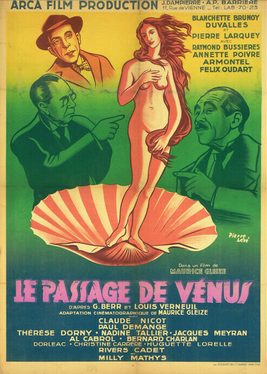
The Passage of Venus is a 1951 French comedy film directed by Maurice Gleize and starring Pierre Larquey, Blanchette Brunoy and Annette Poivre. The film's sets were designed by the art director Lucien Carré. It is based on the 1928 play of the same title by Georges Berr and Louis Verneuil.

Portrait of Innocence is a 1941 French comedy drama film directed by Louis Daquin and starring Louise Carletti, Gilbert Gil and André Brunot. It was shot at the Joinville Studios in Paris during the German occupation. The film's sets were designed by the art director Lucien Aguettand. It is also known by the alternative title Us Kids, and drew uncredited inspiration from Erich Kästner's novel Emil and the Detectives. In 1948 Cecil Day-Lewis based his book The Otterbury Incident on the film's screenplay.

Midnight Tradition is a 1939 French mystery thriller film directed by Roger Richebé and starring Viviane Romance, Georges Flamant and Marcel Dalio. It is based on the 1930 novel of the same title by Pierre Mac Orlan. It was shot at the Neuilly Studios in Paris. The film's sets were designed by the art directors René Renoux and Roland Quignon.
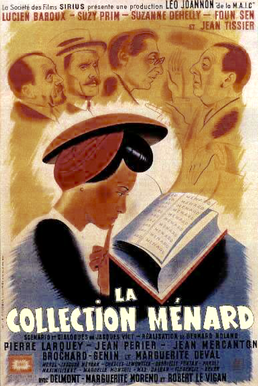
The Ménard Collection is a 1944 French comedy film directed by Bernard Roland and starring Lucien Baroux, Suzy Prim and Suzanne Dehelly. It was shot at the François 1er Studios in Paris. The film's sets were designed by the art director Robert Dumesnil.

Three Days of Fun in Paris is a 1954 French comedy film directed by Émile Couzinet and starring Lucien Baroux, Armand Bernard and Pierre Larquey. It was based on a play by Eugène Labiche. It was shot at the Bordeaux Studios and on location around Paris. The film's sets were designed by the art director René Renneteau.

Women Are Crazy is a 1950 French comedy film directed by Gilles Grangier and starring Raymond Rouleau, Gaby Sylvia and Colette Richard. It is based on the play Château Historique by Marcelle Berr de Turique and Alexandre Bisson. It was shot at the Billancourt Studios in Paris. The film's sets were designed by the art director Lucien Carré.


















